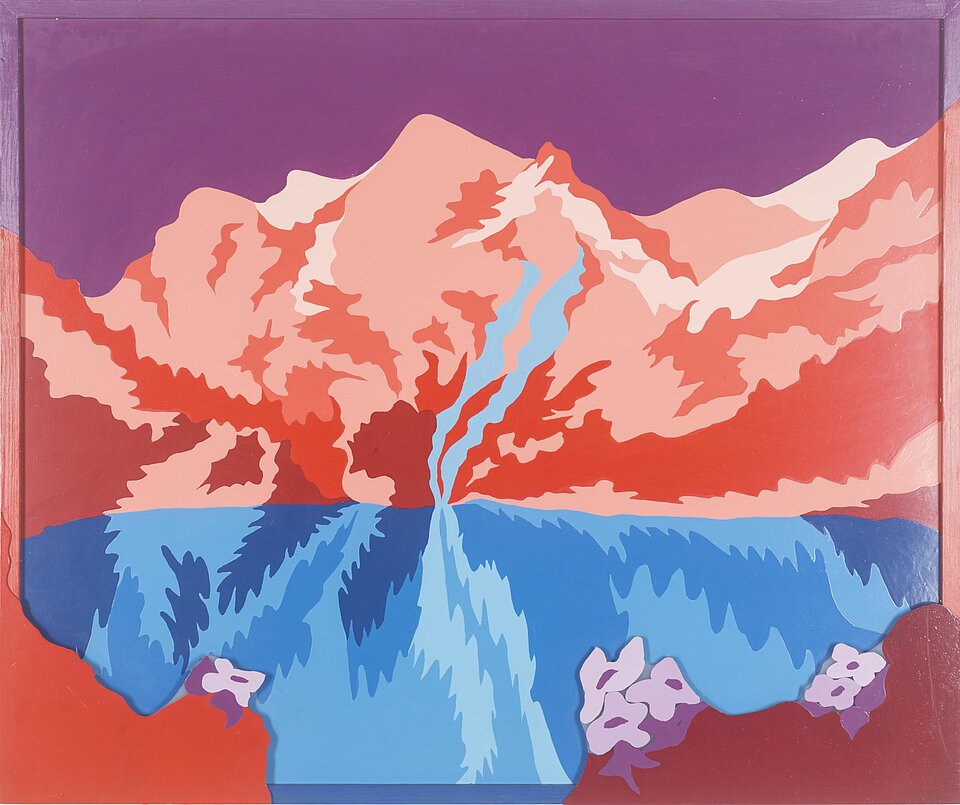With her often highly sensuous paintings and performances, Belgian born artist Evelyne Axell (1935-1972) was one of the few women to be successful during her lifetime in European Pop Art in the nineteen-sixties. Axell once said about her relationship to Pop Art that she wanted to create “free images that depict every kind of passion, yet at the same time are so brilliant that they whet the appetite of the masses.”
One influential critic at the time, Pierre Restany, even viewed Axell as a pioneer of the sexual revolution in the arts. That reflected the resolutely female perspective her art adopted when looking at a body that was often likewise female, portraying it outside the frame of male projection, yet nonetheless with erotic desire. However, the artist’s premature death in a car accident in 1972 brought her work to an abrupt end.
Axell’s Le Glacier is one of the last paintings she completed before her fatal accident. It stems from a phase of Axell's work in which she was intensively involved with ecological issues - ahead of her time. Like many of her works from that period, it is executed in enamel on Plexiglas and Formica – a choice of materials that gives the piece a shiny look that highlights the surface, entirely in keeping with the spirit of Pop Art. The motif, painted from a photograph taken by the artist’s son at the Jägersee in the region around Salzburg, spreads onto the frame and depicts a mountain landscape with peaks, a waterfall, a mountain lake, and flowers. It is an untouched landscape that becomes a psychedelic-artificial template. Highly stylized with bright, smoothly applied colors, this work reveals the surreal, sometimes artificial, and largely media-created nature of the purported alpine idyll.

